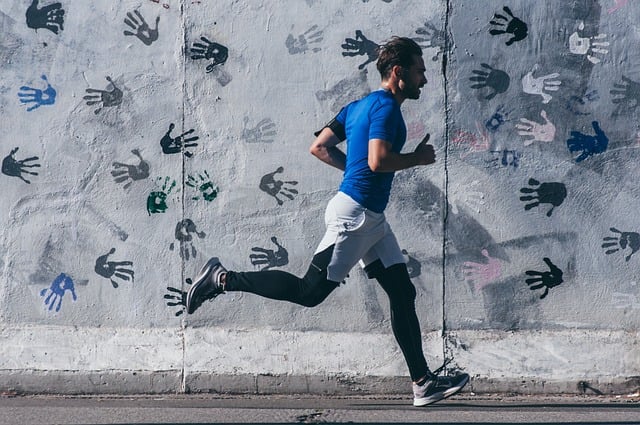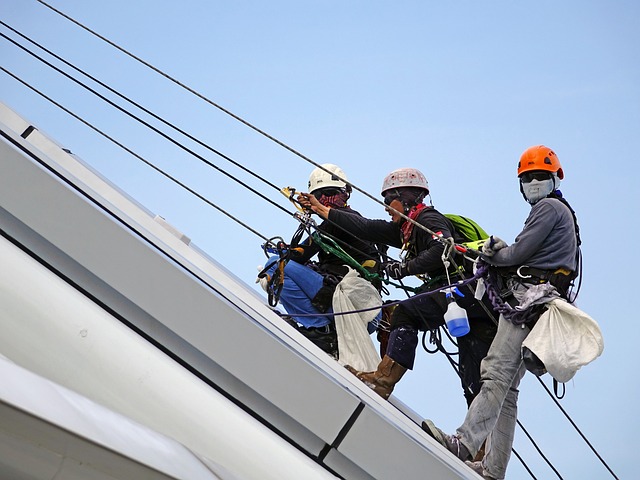Understanding your environment is crucial for implementing effective runner safety tips. Before heading out, research and plan your route, pack essential running gear like reflective clothing, supportive shoes, sun protection, and a first aid kit. Adhering to these runner safety tips ensures a secure and enjoyable running experience in urban or rural landscapes.
Embark on a safe running adventure with these expert tips and essential gear. Whether you’re exploring urban or rural landscapes, understanding your environment is key—scan your route beforehand, be aware of potential hazards, and adapt your strategy for city streets vs. rugged terrain.
From high-visibility clothing to GPS devices and a tailored first aid kit, equip yourself with the right running gear for safety. Learn personal safety measures, stay alert, and protect yourself from the elements, ensuring a fulfilling and secure running experience.
- Understanding Your Environment
- – Scanning your route beforehand
- – Awareness of potential hazards in different terrains
- – Navigating urban vs. rural areas
Understanding Your Environment

Understanding your environment is a crucial component of runner safety tips. Before lacing up your shoes, research and familiarize yourself with the route you plan to run. Consider factors like terrain—is it mostly flat or hilly?—and lighting conditions during different times of day. Check for any potential hazards like loose gravel or uneven pavement that could cause trips or falls. Additionally, look out for areas where personal safety for runners may be at risk, such as poorly lit streets or secluded paths. Having this knowledge allows you to plan your running route accordingly and equip yourself with essential running gear for protection.
When it comes to safe running gear, there are several items that fall under the category of runner protection advice. Wear reflective clothing, especially if you’re running in early morning or evening hours. Consider investing in a good pair of running shoes that offer adequate support and traction. Don’t forget a cap or sunglasses for sun protection, and a lightweight waterproof jacket for unexpected weather changes. Carrying a small first aid kit tailored for runners can also provide immediate care in case of minor injuries. These simple yet essential items will not only enhance your runner safety tips but also ensure you stay protected during your adventures.
– Scanning your route beforehand

Before lacing up your shoes, it’s vital to scan your intended route, especially if you’re exploring new trails or urban areas. Take time to research and plan your run by utilizing online maps and apps that provide detailed information about paths, terrain, and local amenities. This preparation allows you to anticipate challenges like steep climbs, loose gravel, or unfamiliar intersections, enabling you to dress appropriately and pack the right gear.
By scanning your route in advance, you can also identify potential hazards like busy roads or areas with poor lighting, prompting you to prioritize safety measures such as wearing reflective clothing and ensuring someone knows your expected return time. These simple steps are essential running gear components for any adventure, promoting personal safety for runners and making your exploration more enjoyable and secure.
– Awareness of potential hazards in different terrains

Running adventures can be an exhilarating experience, but it’s crucial to prioritize runner safety tips and be prepared for potential hazards that may lurk in different terrains. Whether you’re venturing into forests, crossing rugged landscapes, or navigating city streets, awareness of your surroundings is essential running gear. Before setting out, take time to research the area and identify common risks such as uneven trails, unpredictable weather patterns, or high crime rates. Understanding these potential dangers allows runners to pack the right safety equipment and plan their routes accordingly.
When it comes to personal safety for runners, having the appropriate gear can make all the difference. Essential running gear includes reflective clothing, especially during early morning or evening runs, to enhance visibility for drivers and other runners. A sturdy pair of running shoes with good grip is also vital protection advice, helping to navigate slippery surfaces or uneven terrain without incident. Additionally, carrying a small first-aid kit and a means of communication can provide crucial runner protection tips in case of emergencies.
– Navigating urban vs. rural areas

Navigating urban and rural landscapes presents distinct challenges for runners seeking outdoor adventures. In cities, dense traffic, busy streets, and illuminated neon lights can make it harder to see and be seen. Runners in urban areas should prioritize reflective clothing, especially during early morning or evening runs. Investing in essential running gear like bright jackets, headlamps, or shoes with reflective elements is crucial for runner safety tips. Additionally, using well-lit routes and staying on familiar paths ensures personal safety for runners.
In contrast, rural settings offer breathtaking scenery but come with their own set of risks. Lack of streetlights and potential wildlife encounters demand different precautions. When running in remote areas, carrying a charged mobile phone, a small first aid kit, and a form of identification is essential running protection advice. Wearing sturdy footwear designed for rugged terrain provides runner protection tips while minimizing the risk of injuries from uneven surfaces or unexpected obstacles. Safe running gear includes items that enhance visibility and communication, ensuring runners can enjoy their adventure while staying protected.






